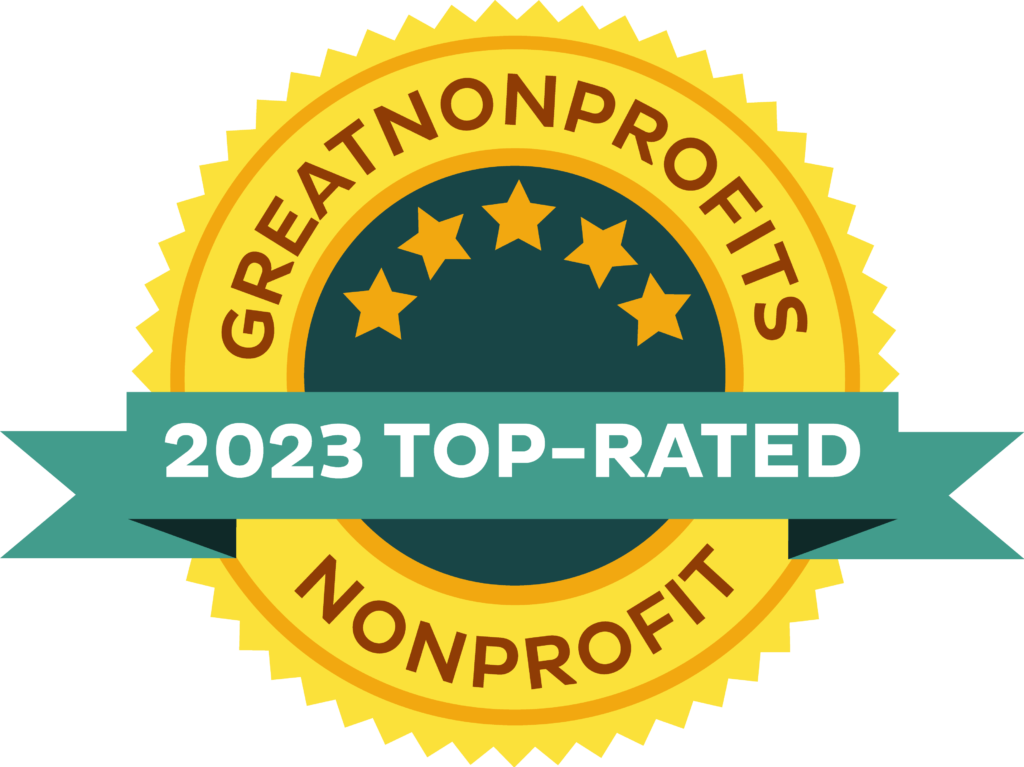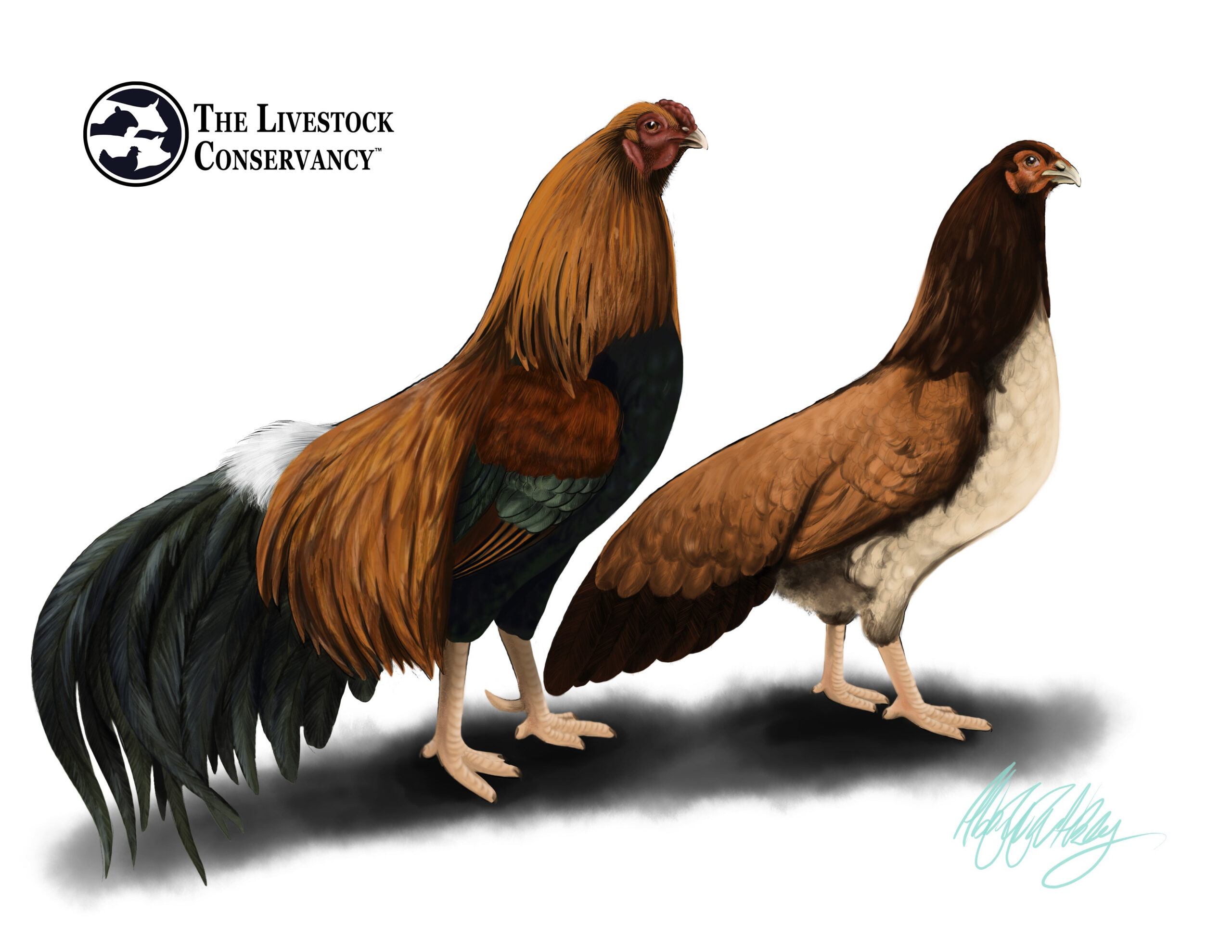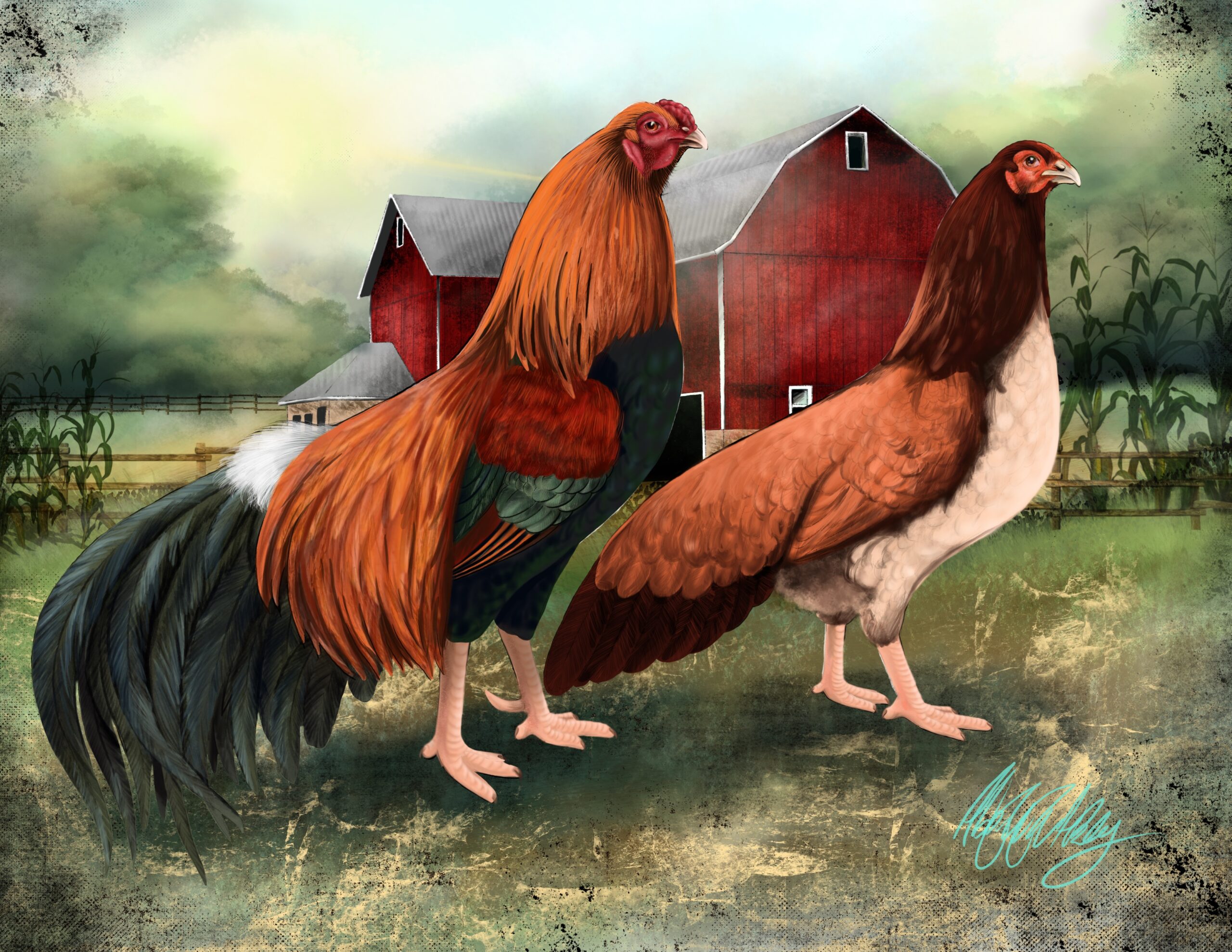Cubalaya Chicken Promotion
During March, 2023, every new and renewing member of The Livestock Conservancy is invited to download an original illustration of the critically-endangered Cubalaya chicken. Original artwork of the rooster and hen was created exclusively for The Livestock Conservancy by noted poultry illustrator Abigail Wojtecki.
To download an illustration, place your mouse over the image, right click and select “save image as…” You will be prompted to name the file and select a location on your computer. Once you download the Cubalaya illustration(s), you are free to use or reproduce it.
The Cubalaya is a beautiful multi-purpose chicken developed in Cuba in the 1800s. Malay and Sumatra chickens imported from the Philippines were crossed with ornately-feathered European game fowl. An elegant-looking dual purpose chicken resulted with good meat and egg production. The breed was accepted into the American Poultry Association’s Standard of Perfection in 1939.
Their unique “lobster tail” with lavish feathering make these birds difficult to confuse with any other chicken breed. Cocks weigh 6 lbs. and hens weigh 4 lbs. on average. Although Cubalayas mature slowly, they produce quality meat and can be reliable layers. Their tameness with people is also a popular trait. For more details about the breed, visit (insert web profile page address).
Developed in the Caribbean, Cubalayas are tolerant of heat and humidity. Yet, less than 300 birds were identified in the United States during the 2021 McMurray Poultry Census. If you have room to add a breed to your pastured poultry flock and live in a warm climate, please consider adding Cubalayas to your farm or backyard.
Click here for more details about the breed.
Illustrator Bio: Abigail Wojtecki Berg
“I have always been passionate about raising animals,” says Cubalaya illustrator Abigail Wojtecki Berg. “After moving to a small farm, I fell in love with livestock. It started with a few old hens my dad purchased from a farmer’s auction.” As her fascination with poultry grew, her research and involvement also evolved.
Today, Abigail travels to more than five states for poultry shows, such as the Ohio National, connecting with people who share her passion for poultry around the world. The Cleveland Institute of Art graduate and professional illustrator owns Wojtecki Wyandottes at Dark Star Farm in Catlett, Virginia, where she has been raising Wyandotte chickens since 2009.
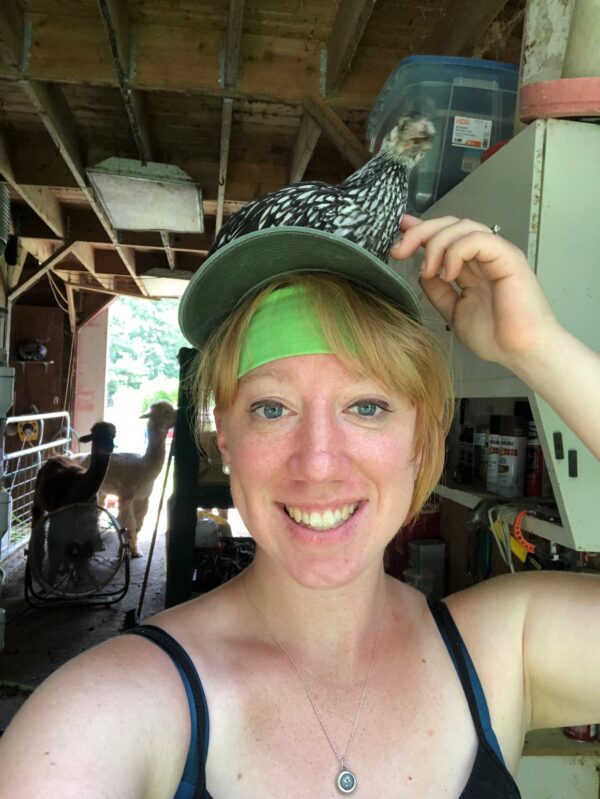
Abigail is the author of The Visual Guide to the Silver-Laced Wyandotte, available for purchase at Amazon. Once she started raising the variety, which graduated off The Livestock Conservancy’s Conservation Priority List (CPL) in 2016, people began asking questions about Wyandottes she couldn’t answer. “I had to travel far and wide to speak to a vast amount of people to collect the knowledge I have now,” she explains. “Most poultry information is passed down the old-fashioned way, through word of mouth. As the gathering continued, I started putting the information into illustrations and words.” Combining visual and textual interpretation provides an easier understanding of specific points. “On top of making an informational book, I also wanted it to be beautiful, something to treasure and remind the reader how stunning chickens are.” Each chapter contains a unique illustration highlighting the ideal as well as disqualifying characteristics.
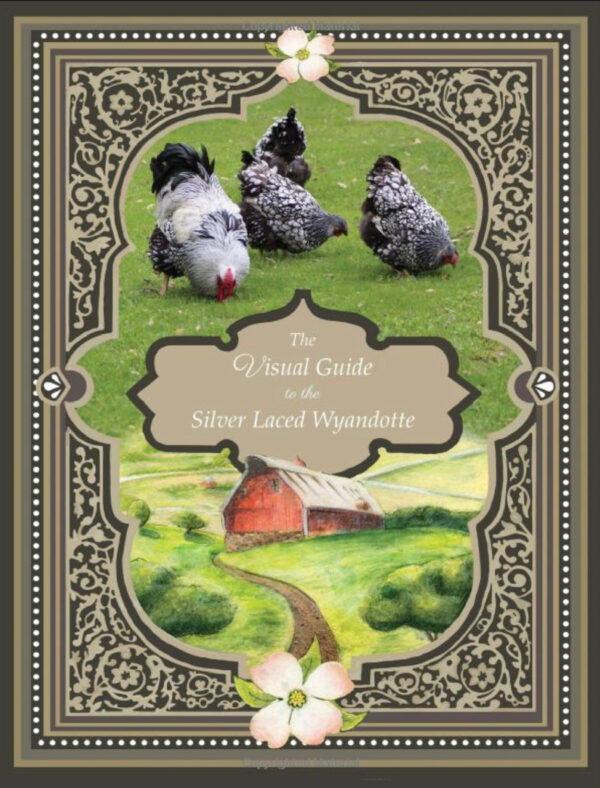
She also has an Etsy store – Wojtecki Wyandottes – where she provides custom illustrations and vinyl designs of poultry, waterfowl, and landrace varieties. Her colorful artwork is often seen within the annual American Poultry Association Year Book, and you can also connect with her on Instagram @thewyandottelady.
Thanks to Abigail for donating her one-of-a-kind original artwork for the March Membership promotion. All proceeds will directly benefit heritage breed conservation to graduate more of our 50+ chicken varieties off the CPL and secure their priceless genetics for future generations to enjoy.


